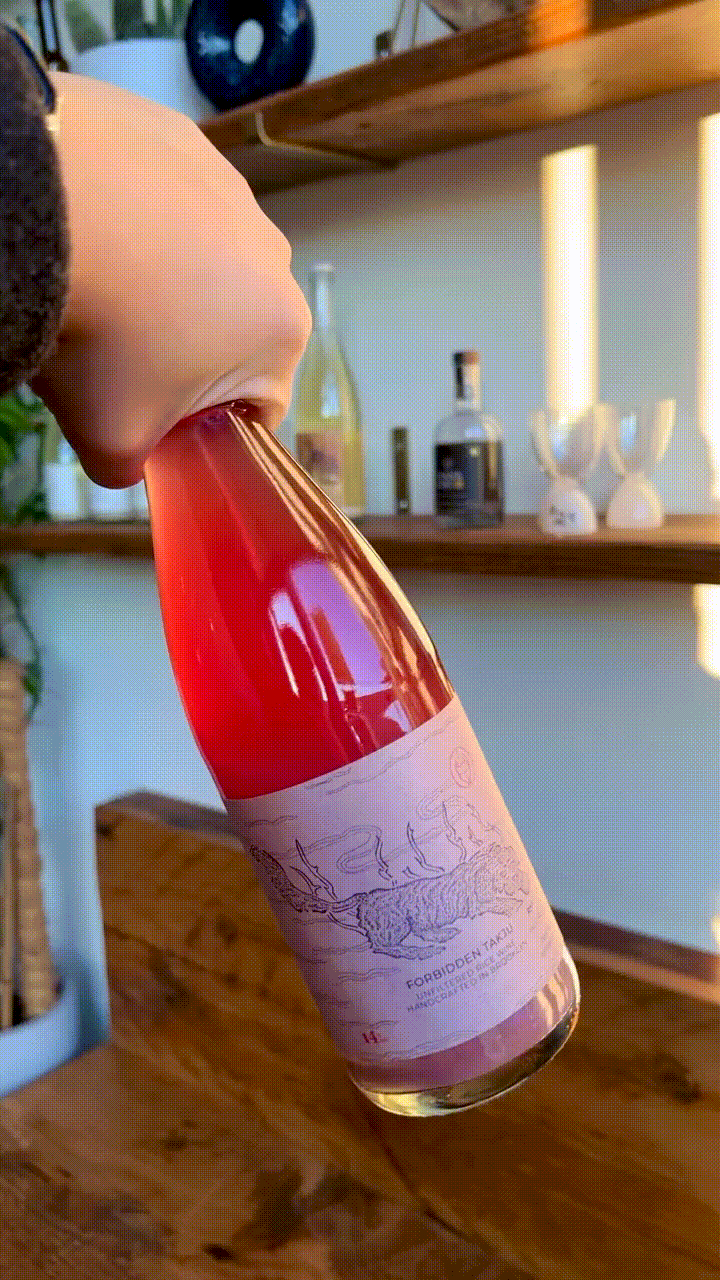How Forbidden Takju Came To Be
The Story of Alternative Grain Sool at Hana
Picture a glass of sool. What comes to mind might be a cup brimming with a milky white drink and bits of sedimented rice swirling like snowfall. Or, you might imagine a clarified brew such as our Yakju 14 with a clear, almost amber-tinted beverage that recalls something light, dry, and refreshing. Rarely do you see sool in another color unless it's flavored by fruit, botanical infusions, or some natural coloring.
At the most basic level, sool only needs three ingredients: rice, water, and nuruk. The most common types of rice used in sool are chapsal, a sweet glutinous rice, and mepsal, medium grain white rice. With so few ingredients, the ratio of these grains determines a brew. Even small tweaks to the amounts of chapsal to mepsal can dramatically alter the flavor and complexity of sool. So it’s no surprise that introducing a completely different grain or varietal to mix will dramatically change its flavor and color too.
The Origins of Forbidden Takju
Our Forbidden Takju is one such brew and something we call an alternative grain sool here at Hana Makgeolli. We use Forbidden rice, an heirloom varietal originating from China, to create a unique alternative grain brew you rarely see in the sool market. Purple in color with a hearty texture, this rice varietal was once so prized by the royal courts and served to emperors across East Asia. Although less starchy than other rice varieties, it’s one of the more nutritious forms of rice that packs in good fibers, aromatics, and complex flavors. As we discovered, it also works well in sool production.
Forbidden rice is commonly served as table rice or mixed multi grain rice in everyday Korean cooking. But this esteemed ingredient has also become a surprising star in our journey to ferment alternative grains. Just a small yet hearty addition of Forbidden Rice (about 25% of the total grain bill) imparts an intense berry flavor and sherbert quality to the brew that is enhanced by a zing of lactic acid. Since we launched the product in October 2022, Forbidden Takju has become a fan favorite of craft beer lovers who love indulging in hazy and lactic beers.
Forbidden Takju’s hand drawn label by Rae French
While the first batch of Forbidden Takju — popular for its singular taste, deep purple complexion, and whimsical hand-drawn label by Rae French, one of Hana’s former Production Assistants — was a success, we knew we could make it better. So at the top of 2024 we tweaked the formula of Forbidden Takju, increasing the amount of chapsal that went into the brew, decreasing the water content and shortening the amount of time we soak the black rice to prevent the rice from blooming. As a result, this year’s batch is much richer in color and softer in taste than the first.
Historically, you won’t find many black rice wines in Korea. However, producers have tinkered with ingredients other than rice to make different forms of sool. You’ll see this practice at both traditionally brewed sool and commercially brewed producers; Barley, sorghum, and wheat, as well as nongrains such as tapioca and sweet potato, have become popular options. Even nuruk, which is typically made from a combination of barley, wheat and dozens of saccharifying enzymes, can be created from ingredients such as rice and mung bean.
How to find our Forbidden Takju
Han’s Alternative Grain Sools: Forbidden Takju and Hyunmi Takju
For the fortunate few who find themselves with a bottle of Forbidden Takju, how should you best serve it? Beyond sipping it from a glass, we have a few ideas for pairings. Since our Forbidden Takju is intensely lactic, it works best when paired with anything with a bit of sweetness or stickiness. A main dish like roast duck or a side of goat cheese will harmonize with the black rice’s berry quality. As far as cocktails go, we recommend mixing something fruity to highlight the sool’s berry notes.
If you are a Hana Sool Club Member, you will find a bottle of Forbidden Takju in the latest Lunar New Release along with our core bottles. But if you’ve been wanting to get your hands on this limited alternative grain release, we have some good news. You can order Forbidden Takju through our website (available for nationwide shipping, local delivery, or pick up at the brewery.) In the Tasting Room, we’ll be serving it as a glass or carafe, while supplies last. Fortunately for you, Forbidden Takju is one of the brews that get better as you drink it.




